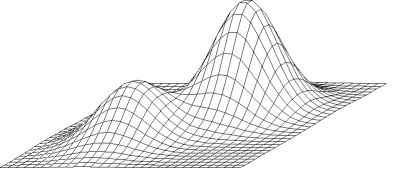Simulated Annealing
Life By Default
Until I quit my job at Google, my life was on auto-pilot. My future had been decided for me given my starting conditions: a first-generation Indian-American growing up in NYC. It was a predictable path. Doing well at math? Take advanced classes. Have a propensity for science? Major in engineering. Know how to code? Get a job at Google.
I left because I sensed a regret in the making. Life is so broad and I was living a very narrow, predetermined version of it. There are so many ways of living. How do I know this is the right path for me? I only landed on it due to my initial circumstances, not an intentional discovery process. There was a whole world to explore before I doubled down on my direction.
Explore vs Exploit
But how do you explore effectively? There is a trade-off between advancing in your current direction and experimenting with an alternate one. On one hand, you already have momentum. I had a solid career ahead of me, with no signs of stopping. Taking a chance on something else would interrupt my progress. On the other hand, I may not be working towards the right goal. The momentum doesn’t serve me if a conventional job is not my calling. In fact, it actively separates me from my true purpose.
Simulated Annealing
My exploration strategy is inspired by an algorithm called simulated annealing. It’s a hill-climbing algorithm that is used to identify a global optima over a large search space. Translation: it finds the “best” solution among many good solutions, even when you can’t see all of them at once. How? By adding a lot of randomness initially and decreasing it over time.
If I lost you, Chris Dixon illustrates this excellently in the following excerpt. (I discovered his essay on the same topic after I decided to write this.)
Imagine you are dropped at a random spot on a hilly terrain, where you can only see a few feet in each direction (assume it’s foggy or something). The goal is to get to the highest hill.

Consider the simplest algorithm. At any given moment, take a step in the direction that takes you higher. The risk with this method is if you happen to start near the lower hill, you’ll end up at the top of that lower hill, not the top of the tallest hill.
A more sophisticated version of this algorithm adds some randomness into your walk. You start out with lots of randomness and reduce the amount of randomness over time. This gives you a better chance of meandering near the bigger hill before you start your focused, non-random climb.
Another and generally better algorithm has you repeatedly drop yourself in random parts of the terrain, do simple hill climbing, and then after many such attempts step back and decide which of the hills were highest.
An Intentional Life
That last algorithm is how simulated annealing works. I’ve found it to be a valuable analogy for crafting an intentional life. At birth, you are dropped at a random spot with limited visibility. For me, it was being born as an Indian-American with a natural aptitude for the sciences. Since then, I climbed up the only hill I could see: having a successful job in tech.
But was that the lower hill? The algorithm presents a way to find out: drop yourself in a new region and get a lay of the land. You achieve this by throwing yourself into an alternate lifestyle and gaining an experiential understanding of it. In my case, I quit my job and chose to pursue this self-development and entrepreneurial journey.
I don’t know where it will take me, but I’m excited to explore the terrain. Since it’s still early days, I have the time to meander randomly. As I voyage further, I’ll dial down the randomness. By then, I’ll have seen enough hills to develop the conviction that I’m climbing the right one.
–
This post took redacted minutes to write.
Here’s why I share this data with my email list. Join us!
P.S: You can find more of my thoughts on Twitter @_suketk.